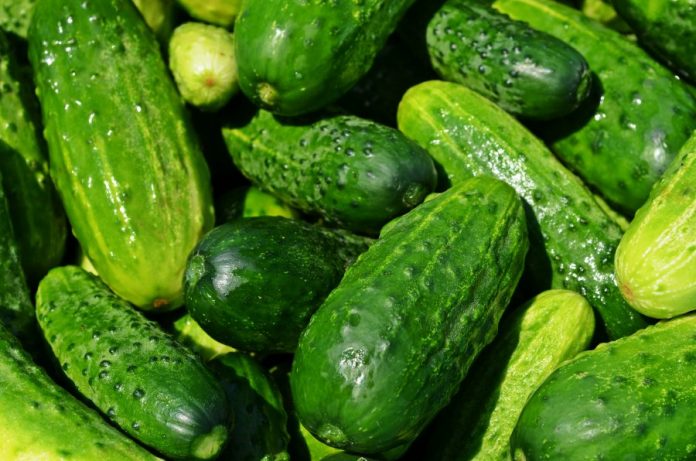 It might interest you to know the biblical prophet Isaiah compared his wayward countrymen to gardeners who had abandoned their cucumber vines.
It might interest you to know the biblical prophet Isaiah compared his wayward countrymen to gardeners who had abandoned their cucumber vines.
Ever had a bitter ‘cuke? That’s what happens without regular watering. Since Isaiah’s day, the lowly cucumis sativus has made its way into greenhouses, farms, gardens, kitchens, salads and pickle jars around the planet.
The good news for North Texans is that ‘cukes LOVE summer heat AND eight-hours of daily full sun. Well, throw my 10-gallon hat on the ground and holler, “Bring it on Bubba!”
Despite these idyllic traits, cucumbers are not cacti. The rule of thumb for sweet fruits is daily watering. Afternoon wilting is normal in our area. If your plants are sagging by lunchtime, they need a drink.
The other half of the cucumber good news two-fer is that cucumbers LIKE acid soil—vinaigrette. In professional “horti language,” they like digging their tootsies in low pH stuff. If your plants look like they’re struggling, try mixing peat moss and/or pine straw into your native soil. (Did I ever say high school chemistry is with us forever?)
The big issue in southern Denton County is making soil that absorbs and holds water. Alas, we cannot escape the topic of compost. Here’s a good plan to sow and grow ‘cukes locally.
- Dig a hole, or row, 12-inches wide, then line it with two- to four-inches of compost. Feel free to mix in peat moss or pine straw. Organic buffs make the compost a four to six-inch layer.
- Soak the layer with water. Among other things, this rotting matter functions like a cistern when the summer heat dries the garden surface.
- Pile the dug soil over the wet compost, then make mounds a foot apart.
- Plant a half-dozen seeds in each mound about one-half-inch below the surface, then give the mounds, or rows, a good soaking with more water. Damp seedlings germinate in damp soil in a few days.
- A few days after the seeds are fully awake, gently thin the baby plants to three-per-mound. Cucumber roots damage easily, so the operative word is “gently.”
- When the thinned plants are established, apply mulch leaving a couple of inches of bare soil around the stems, so water can soak into the ground and get to the roots.
Cucumber plants come in bush and vine varieties. Bushy types, like Spacemaster, are good for small gardens and patio pots. Vines require room, since they sprawl or climb an average distance of six-feet; some are shorter and some longer.
Each cucumber plant produces boy and girl flowers. About a half-dozen boy flowers show up first near the vine’s base. Their anthers produce pollen, which the girl flowers will need when they show up a few inches up the vine.
Some nutty gardeners carefully tear off the boy flowers and manually brush the stamens against the girl flowers. Howard Garrett’s reaction to this kind of gardening is, “Get a life!”
The rest of us let the bees and wind take care of pollination OR we give our vines a shake when we visit. Un-pollinated ‘cukes curl up like the alphabet letter “C” and they are seedless.
Pick cucumbers as soon are they are mature or the vines will shut down flower production. I plant a second time in August and get a tasty autumn crop of ‘cukes.

















